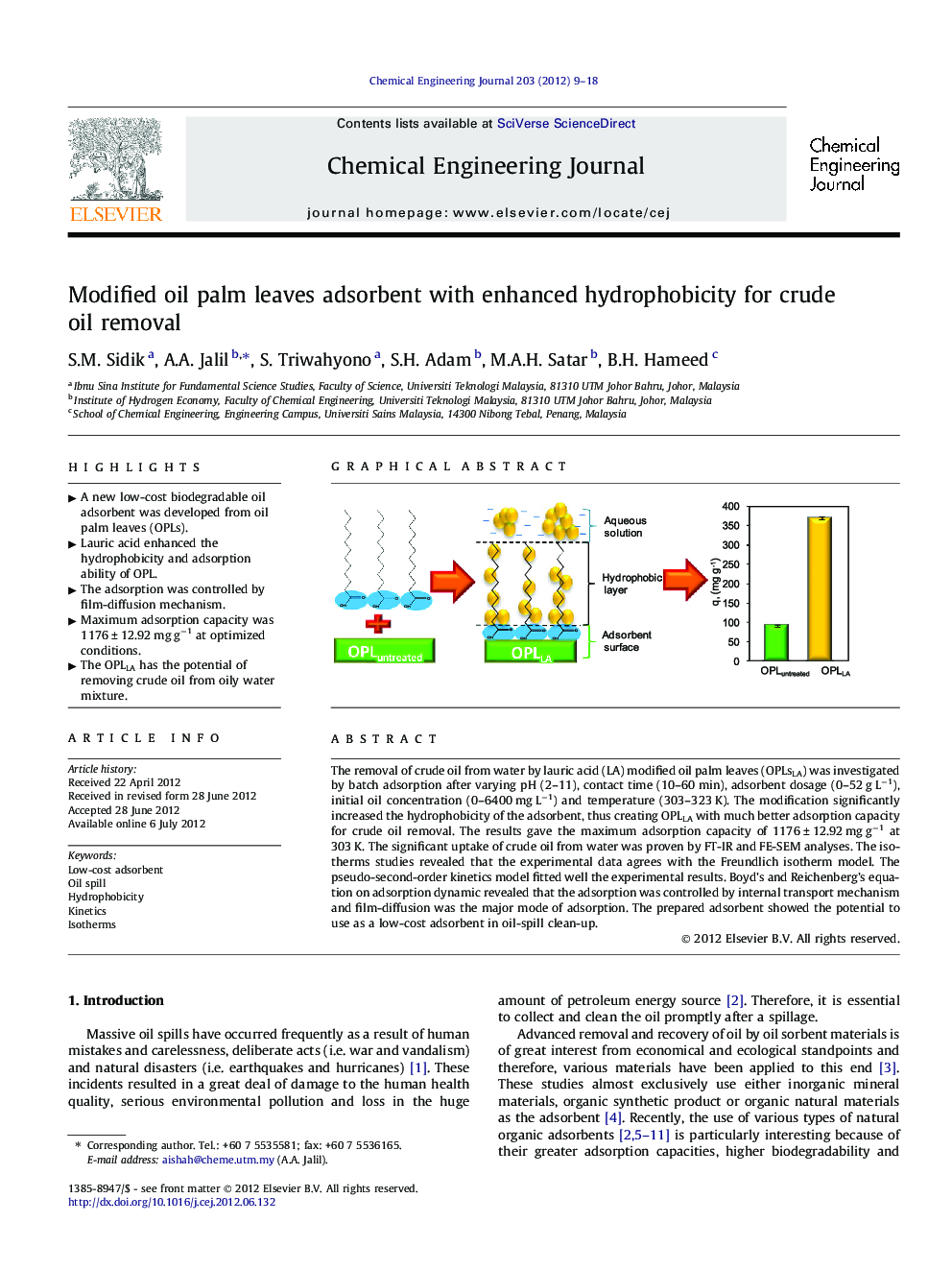| Article ID | Journal | Published Year | Pages | File Type |
|---|---|---|---|---|
| 149269 | Chemical Engineering Journal | 2012 | 10 Pages |
The removal of crude oil from water by lauric acid (LA) modified oil palm leaves (OPLsLA) was investigated by batch adsorption after varying pH (2–11), contact time (10–60 min), adsorbent dosage (0–52 g L−1), initial oil concentration (0–6400 mg L−1) and temperature (303–323 K). The modification significantly increased the hydrophobicity of the adsorbent, thus creating OPLLA with much better adsorption capacity for crude oil removal. The results gave the maximum adsorption capacity of 1176 ± 12.92 mg g−1 at 303 K. The significant uptake of crude oil from water was proven by FT-IR and FE-SEM analyses. The isotherms studies revealed that the experimental data agrees with the Freundlich isotherm model. The pseudo-second-order kinetics model fitted well the experimental results. Boyd’s and Reichenberg’s equation on adsorption dynamic revealed that the adsorption was controlled by internal transport mechanism and film-diffusion was the major mode of adsorption. The prepared adsorbent showed the potential to use as a low-cost adsorbent in oil-spill clean-up.
Graphical abstractFigure optionsDownload full-size imageDownload as PowerPoint slideHighlights► A new low-cost biodegradable oil adsorbent was developed from oil palm leaves (OPLs). ► Lauric acid enhanced the hydrophobicity and adsorption ability of OPL. ► The adsorption was controlled by film-diffusion mechanism. ► Maximum adsorption capacity was 1176 ± 12.92 mg g−1 at optimized conditions. ► The OPLLA has the potential of removing crude oil from oily water mixture.
